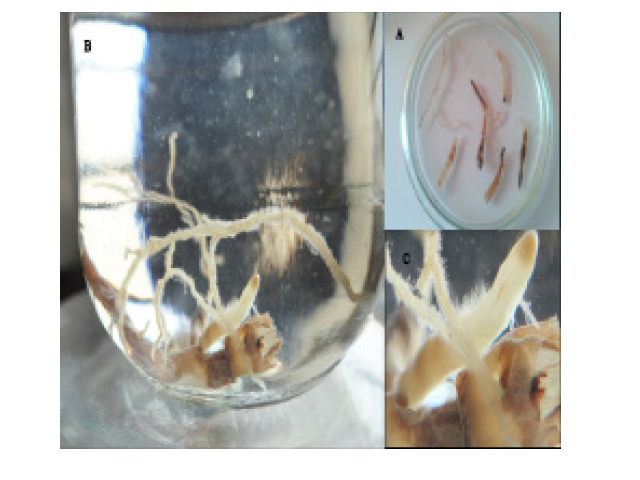Induction and Growth Optimisation of Hairy Root Culture of Chlorophytum Species
DOI:
https://doi.org/10.5530/BEMS.1.1.8Keywords:
Agrobacterium rhizogenes, Chlorophytum, Hairy roots, SaponinsAbstract
We aimed to develop a protocol for development of hairy root culture and to enhance secondary metabolite level in Chlorophytum species. Explants such as leaf and tubers of Chlorophytum species were used however only tubers preincubated in cytokine (1 mg/l) had positive response for the induction of hairy roots. The hairy roots emerged from the incubated tubers after 9–12 days of co–cultivation with Agrobacterium rhizogenes R1000. The Transformants showed a logarithmic increase in the number of hair like structures formation on surface of tubers. This faster growth of transformed plants was obtained by using one of super virulent strain of Agrobacterium rhizogenes R1000. Genetic markers included rolA responsible for T-DNA transfer and hairy root initiation to confirm bacterial gene transfer were detected from transformed root. Hairy roots showed significantly enhanced production of saponins. Percentage yield of transformed roots of Chlorophytum laxum was 10% while that of non-transformed tissue of same plant was only 2.5%. Our result suggests that saponin level in transformed tissue is higher than non-transformed tissue.










